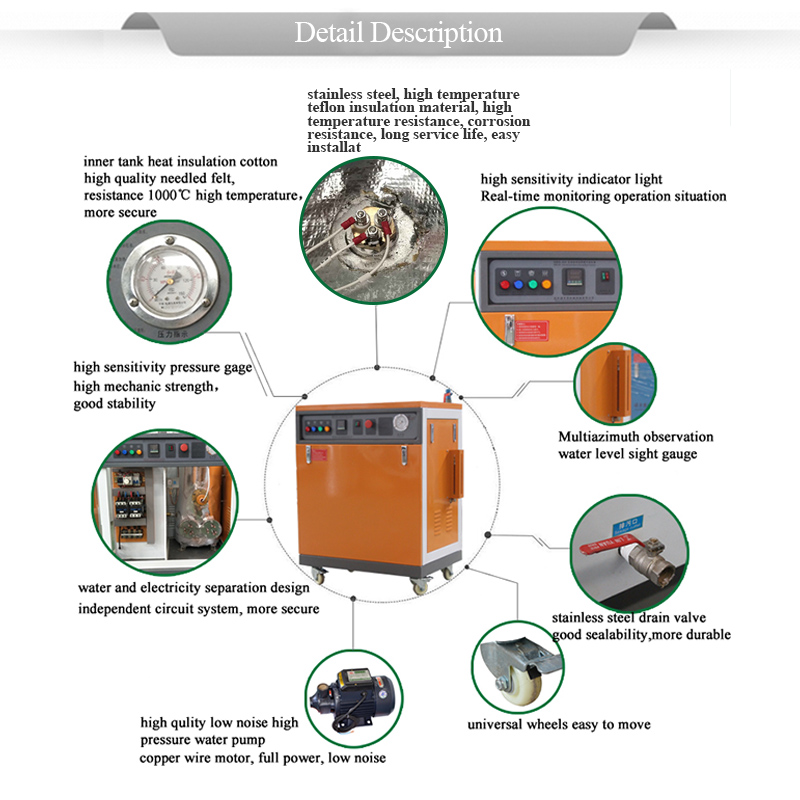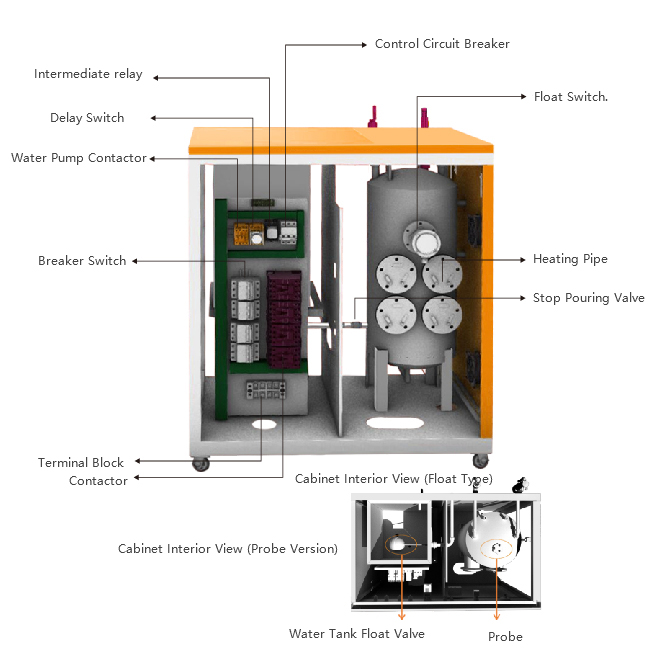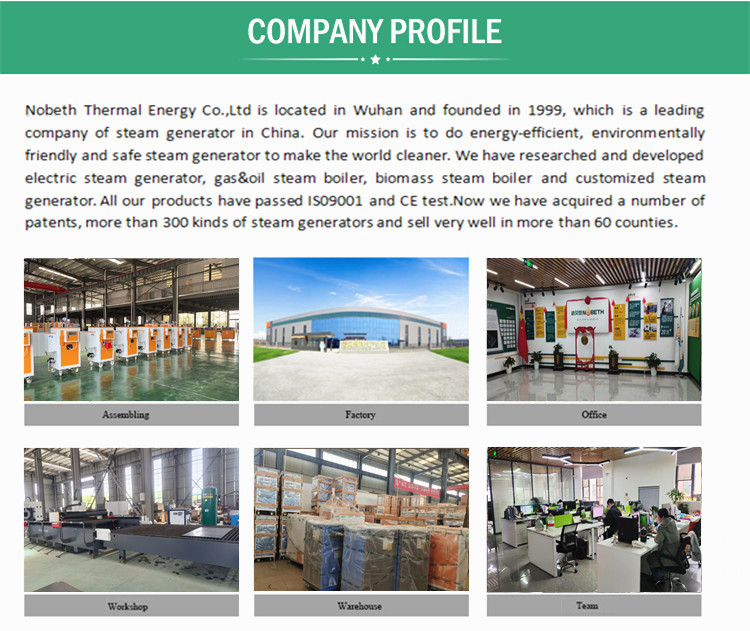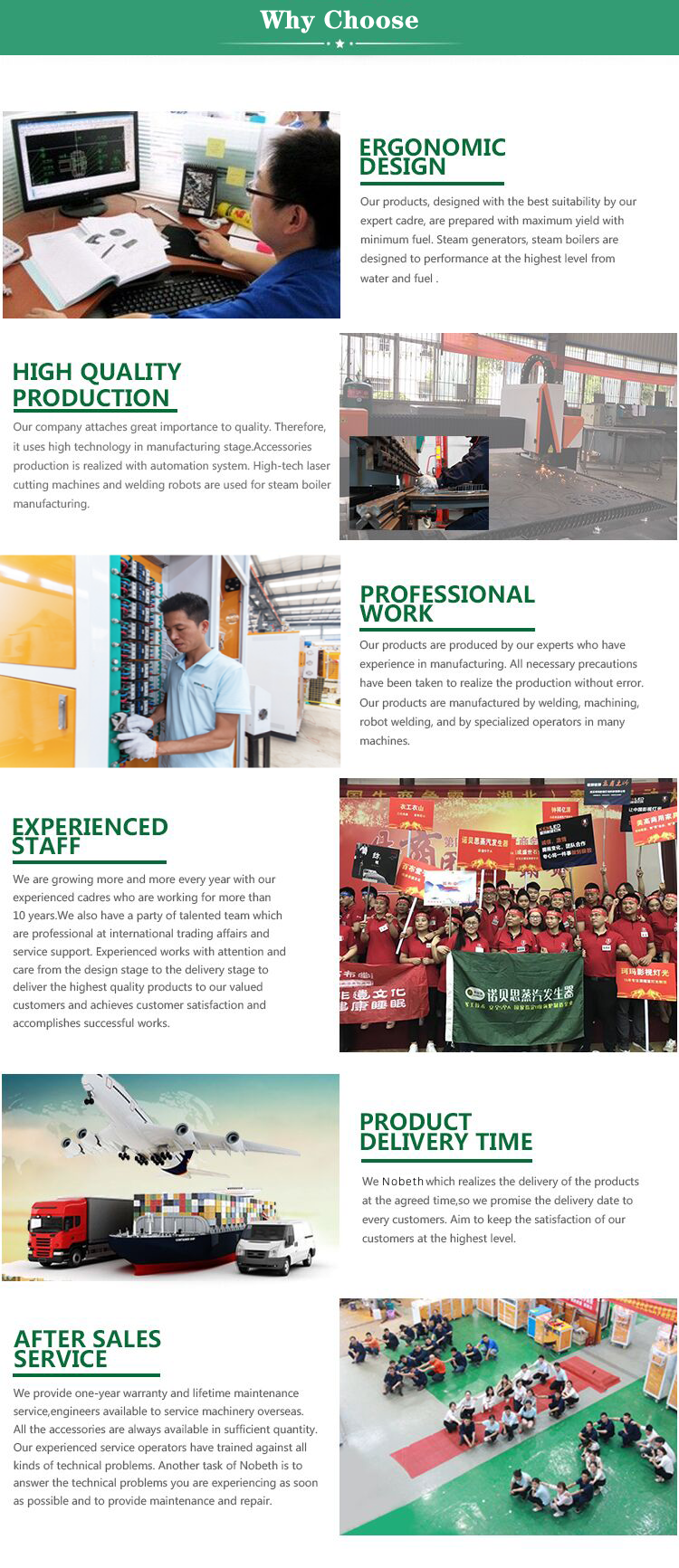
AH 60KW Fully Automatic Steam Generator used for Sterilized Tableware
In fact, the unified disinfection of tableware saves water, electricity and other resources to a certain extent, and solves the problem of unqualified tableware disinfection in most small and medium-sized hotels. However, there are large and small disinfection companies, some are formal, and it is inevitable that some small workshops will take advantage of the loopholes. So there are still some problems in this industry.
1.Sterilizing tableware does not require a health permit
Units that centralize the disinfection of tableware do not need to obtain a health administrative license and can operate with an industrial and commercial business license. The health department can only penalize companies that fail to pass the hygienic standards for disinfecting tableware. There is no legal basis for punishment for companies that fail to comply with on-site supervision of layout, operating procedures, etc. Therefore, the current sterilized tableware companies on the market are mixed.
2.Tableware has no shelf life
Sterilized tableware should have a shelf life. Generally speaking, the disinfection effect can last for at most two days, so the packaging should be printed with the factory date and shelf life of two days. However, many sterilized tableware fails to meet the requirements.
3.Leave fake contact information on the packaging
Many small workshops will leave fake phone numbers and factory addresses on the packaging in order to avoid responsibility. In addition, frequent changes of workplaces have become a common practice.
4.The hygienic condition of small workshops is worrying
This industry consumes a lot of electricity due to the use of dishwashers, sterilizers, etc. Therefore, some small workshops save a lot of steps in the disinfection cycle, and at best they can only be called dishwashing companies. Many workers don’t even have health certificates. They all wash dishes and chopsticks in large basins. The vegetable residues are all over the basin, and flies are flying in the room. It is wrapped in plastic film after washing, making it difficult for consumers to judge when to use it.
Some experts believe that when the market is not yet regulated, all sectors of society must supervise each other. Hotel operators must first be self-disciplined and cooperate with regular disinfection companies to prevent tableware with health risks from being served at the first source. Consumers must also learn how to identify whether tableware is hygienic.
Three steps to identify whether tableware is hygienic
1. Look at the packaging.It should have clear information about the manufacturer, such as factory address, phone number, etc.
2. Observe whether the manufacturing date or shelf life is marked
3. Open the tableware and smell it first to see if there is any pungent or moldy smell. Then check carefully. Qualified tableware has the following four characteristics:
Light: It has a good luster and the color does not look old.
Clean: The surface is clean and free of food residue and mildew.
Astringent: It should also feel astringent to the touch, not greasy, which indicates that the oil stains and detergent have been washed away.
Dry: Sterilized tableware has been sterilized and dried at high temperature, so there will be no moisture. If there are water droplets in the packaging film, it is definitely not normal, and there should not even be water stains.
In fact, even if people distinguish whether the tableware is hygienic, they still feel uneasy. Many people who pay attention to food hygiene are used to rinsing tableware with hot water before eating. People are also confused about this, can this really disinfect and sterilize?
Can boiling water really disinfect tableware?
“For tableware, high-temperature boiling is indeed the most common method of disinfection. Many germs can be killed through high-temperature disinfection.” However, boiling water to scald the bowls cannot achieve such an effect, and can only remove the stains on the tableware. Dust removed.
Products categories
-

E-mail
-

Phone
-

WhatsApp
-

Top

















